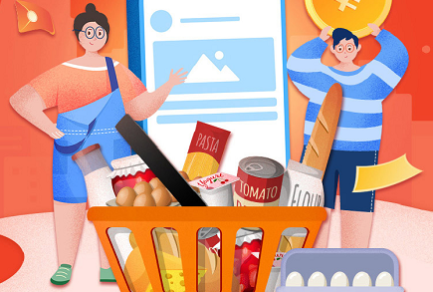Dec 10, 2020|
In-Depth Report: JD Helps China’s Elderly Embrace New Tech Frontiers
by Ella Kidron
“After entering the [app] store, click on the magnifying glass and type in the name of the app you want in order to download it.” Zilin Chen, 36, a trainer with SEVEN FRESH, JD.com’s omnichannel supermarket, is addressing a class of attentive students, some of whom are nearly twice his age. The class is conducted in collaboration with the Guangzhou Liwan District Retired Civil Servants School. JD will open three SEVEN FRESH LIFE stores (small scale versions of SEVEN FRESH supermarkets located in residential areas) in Guangzhou later this month.
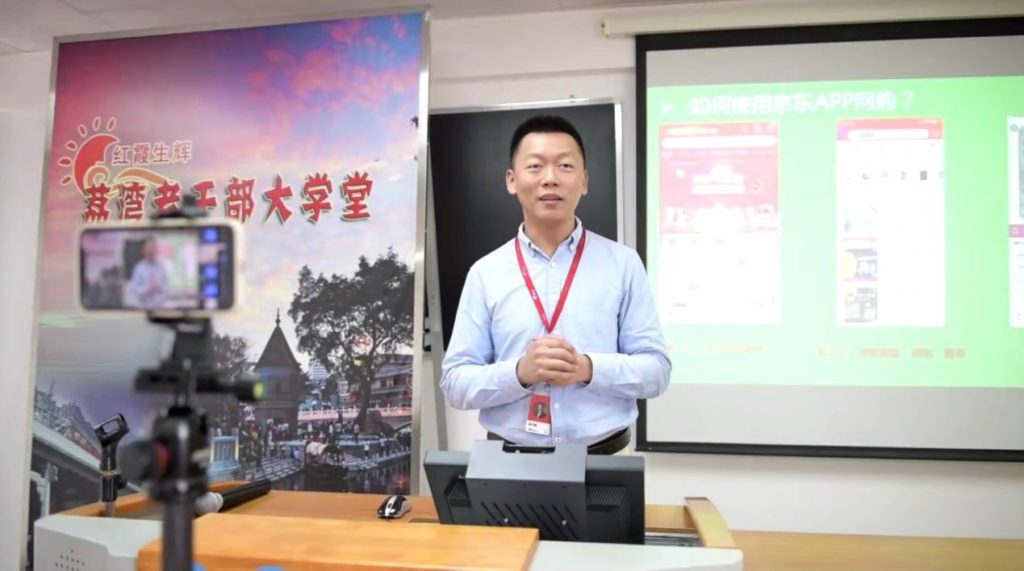
Zilin Chen addressing a class of elderly
The class in session is focused on how to use the Internet on a mobile phone. The course starts out with the basics such as where and how to download apps and the function of each app. Then it will gradually increase in difficulty, covering how to virtually line up for the hospital, shop online, scan QR codes and connect a bank card, among other skills. It relies on a hands-on approach where the elderly pull out their phones and follow along.
For example, when learning about e-commerce, the students browse for specific products and can see real discounts – this gets them excited, according to Chen. They realize firsthand the convenience of technology in their everyday lives. According to the JD Big Data Research Institute, elderly consumers most commonly buy food products online, and their consumption of nutritional and health products has also increased 83% YOY.
A brand new skillset
Auntie* Zhong, 58, leads a rich life of waking up at 6:00 am, practicing yoga, cooking and then going to dance class in the afternoon. After mastering the smart phone, adapting to the “online world” became a new life project for her. With the colorful world of online movies, TV dramas, books and countless products which can be bought through e-commerce, Auntie Zhong’s life and others are no different from the youngsters around her. Sales of history books increased by 77% YOY among elderly shoppers, while sales of cameras and photography-related and other hobby products increased by more than 50%, according to JD data.
A few years ago, Auntie Zhong could only make phone calls and struggled to type on her mobile. With the smart phone her child bought for her in tow, she attended the class and once getting acquainted, became the “fashion icon” of her friend group.
The training also helped Auntie Huang, who is in her 70s, up her game, adding flash sales, group buying and even competing for red envelopes to her online skills repertoire. During the Singles Day Grand Promotion period (Nov. 1-11), Auntie Huang discovered a game where she could “adopt” a virtual dog and play games to accumulate points and cash prizes. She recently used the points to buy herself a suitcase worth a few hundred yuan.
Auntie Huang finds that she is not much different from the “younger girls”, and spends most of her money on clothes and cosmetics such as Lancôme powder, Estée Lauder eye cream and more. According to JD’s data, beauty product sales from elderly consumers have increased by 87% YOY, while jewelry and hair accessories saw an increase of 50%.
Savvy, she even browses social media e-commerce platform Xiaohongshu (小红书) and popular video short video platform Douyin (抖音). “Now I can receive packages every day. I’m very happy,” she said. Having worked hard all her life, the smartphone has opened up a new world for her in retirement.
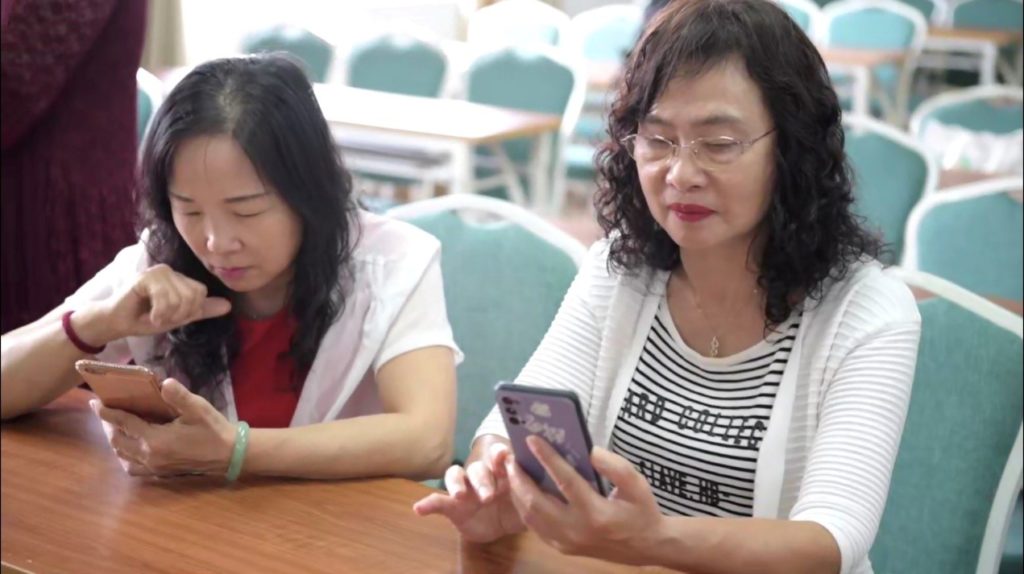
Classmates Auntie Huang and Auntie Zhong
Grandpa Luo, who goes by “Sir Luo”, previously used his phone for WeChat and sporadically browsing the news. He now relies on the internet for practical purchases – electrical appliances, exercise equipment for elderly and food items unavailable in the supermarket. JD’s big data finds that sales of fitness training products by elderly consumers has increased 100% YOY.
The “trophy” in Sir Luo’s online shopping collection is a portable charger he bought for his wife for around RMB 100 yuan. A shopping maven herself, his wife receives express deliveries almost every day. She is also keen on taking selfies and has all sorts of “beautifying apps” on her phone, which she relies on instead of having Sir Luo, who picked up photography as a hobby, take photos for her. Her phone is always running out of battery. “I gave her a portable charger so she can think of me when she is using her phone. This is my little trick,” said Sir Luo. His proud moment of mobile phone mastery comes when the taxi he has ordered via an app arrives and the driver is impressed with his ”skill” to call the car. “Right now my biggest problem is that the phone’s storage is not sufficient. I hope to switch to one with a bit more storage next.”
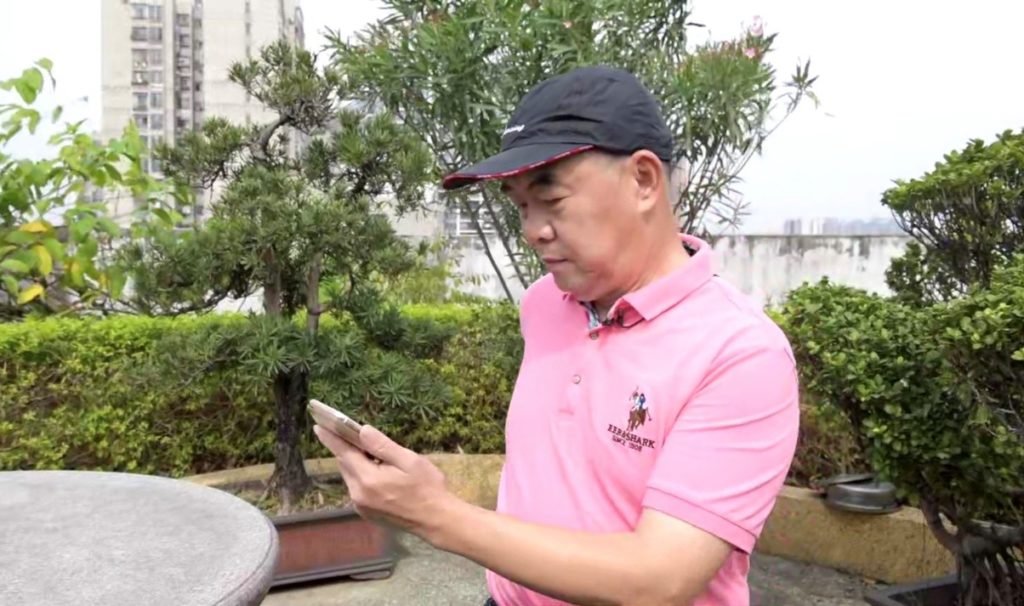
Sir Luo surfing the Internet on his mobile phone
There are many functions of mobile phones that younger users take for granted. Sir Luo recalls that the first time he bought something through e-commerce – a mobile phone stand, he waited anxiously for three days to receive it, only to find that it was broken. “At that time, I didn’t understand how to do returns or communicate with customer service. All I could do was sulk about it.” A few years ago, Auntie Zhong found herself stuck with clothes that didn’t match and spoiled fruit. In the course, the elderly learn how to compare goods, contact customer service and return and exchange products.
The enthusiasm to participate in the course is extremely high – more than 100 people signed up within two days, and the classroom was packed when classes are given. “Without this class, even with smart phones, it would still be difficult for these elderly to access apps.”
A global phenomenon
The world is getting more and more digitalized by the day, but elderly people without a grasp of the latest knowledge are left behind. Statistics from China Internet Network Information Center show that among 940 million internet users in China, the share of those aged 60 and above rose from 4% at the end of 2016 to 10.3% in June 2020. Since 2020, the growth rate of new users on JD has been highest among the middle-aged and elderly (46+). However, JD also finds that loneliness among this population is one of the biggest problems. Seventy percent of elderly consumers believe children are indispensable in their care process and 68% want to spend more time with their children, while their children tend to replace filial piety with material purchases. Among related categories, the proportion of remote orders (orders go to the recipient and sender are different) is as high as 27.2%.
This is a global phenomenon and one that is exacerbated with the outbreak of COVID-19. Under lockdowns, many elderly around the world have to rely on technology much more than before – for health management, connection and companionship. In China, more elderly consumers started shopping at the height out the virus outbreak, and kept up the habit afterwards. Elderly in the U.S. and other places find themselves in a similar board. Mrs. Alexander, 88, in Monroe, New Jersey eagerly learned how to text a few years ago, but it was COVID-19 that pushed her onto Zoom. Today, a typical day for her might include a physical therapy session via her trainer online, followed by a catch up with family or friends. Last month, Mrs. Alexander celebrated her 88th birthday surrounded by over 20 relatives “Zoom-ing” in from around the world.
Easing the transition
The training program is one of JD’s many efforts to help elderly embrace and enjoy the possibilities the Internet offers. Beyond e-commerce, elderly are also able to use the internet to manage their health. Since 2020, purchase of online medical consultations by elderly customers has increased 233 times YOY.
Earlier this month, JD worked with several mobile phone brands to launch smart phones for elderly people through its Consumer-to-Manufacturer (C2M) initiative. The 5G smart phone that JD Mobile and JD Health (which listed on Hong Kong Stock Exchange on Dec. 8) launched with ZTE is equipped with services such as remote assistance, detailed instructions, fast medical consultancy and more. For example, customers can download the app called “family time” developed by JD, and connect to their parents’ smart phones. Then customers can remind their parents remotely to take medicine or share family photos with them. Parents can easily make emergency calls and share their locations with their children.
In the face of an ever-changing internet, many elderly have a deep-seated fear of being left behind. This is not lost on Chen. When class ended, he immediately went home and asked his parents if they wanted his help downloading an app. Surprised, they uttered the rough equivalent of “when pigs fly.” This saddened Chen. “In the past, when they asked for help, I was always too busy or make a flippant attempt to help. Perhaps I neglected their feelings.”
To narrow the digital gap for the aging population, the Chinese government has recently issued specified plans to help elderly people overcome barriers to using smart technology. JD has set up exclusive service zones to ease the shopping experience for the elderly in its nationwide offline stores including JD Home Appliance stores, JD Computer and Digital stores, JD Pharmacy, Seven Fresh, JD Convenience stores and more.
(ella@jd.com)





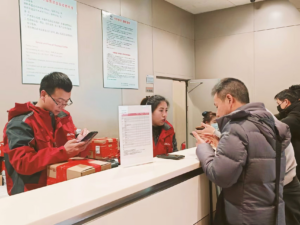 This Harbin tourism boom has also spurred a surge in sales of winter apparel. JD.com’s data indicates a rapid growth in the sales of warm clothing items such as down jackets, snow boots, and thermal underwear between January 1st and 7th. The sales growth is especially pronounced in southern provinces and cities such as Jiangsu, Zhejiang, Guangdong, Sichuan, and Shanghai. Notably, tall snow boots registered a 206% year-on-year increase in transactions, while padded cotton caps and thickened long down jackets soared by 158% and 134%, respectively. Beyond clothing, travel gear has also seen a considerable uptick, with a 98% year-on-year growth in transactions for large suitcases and travel backpacks in these southern regions.
This Harbin tourism boom has also spurred a surge in sales of winter apparel. JD.com’s data indicates a rapid growth in the sales of warm clothing items such as down jackets, snow boots, and thermal underwear between January 1st and 7th. The sales growth is especially pronounced in southern provinces and cities such as Jiangsu, Zhejiang, Guangdong, Sichuan, and Shanghai. Notably, tall snow boots registered a 206% year-on-year increase in transactions, while padded cotton caps and thickened long down jackets soared by 158% and 134%, respectively. Beyond clothing, travel gear has also seen a considerable uptick, with a 98% year-on-year growth in transactions for large suitcases and travel backpacks in these southern regions. JD’s Service Brings Peace of Mind to Mobile Phone Consumers
JD’s Service Brings Peace of Mind to Mobile Phone Consumers


